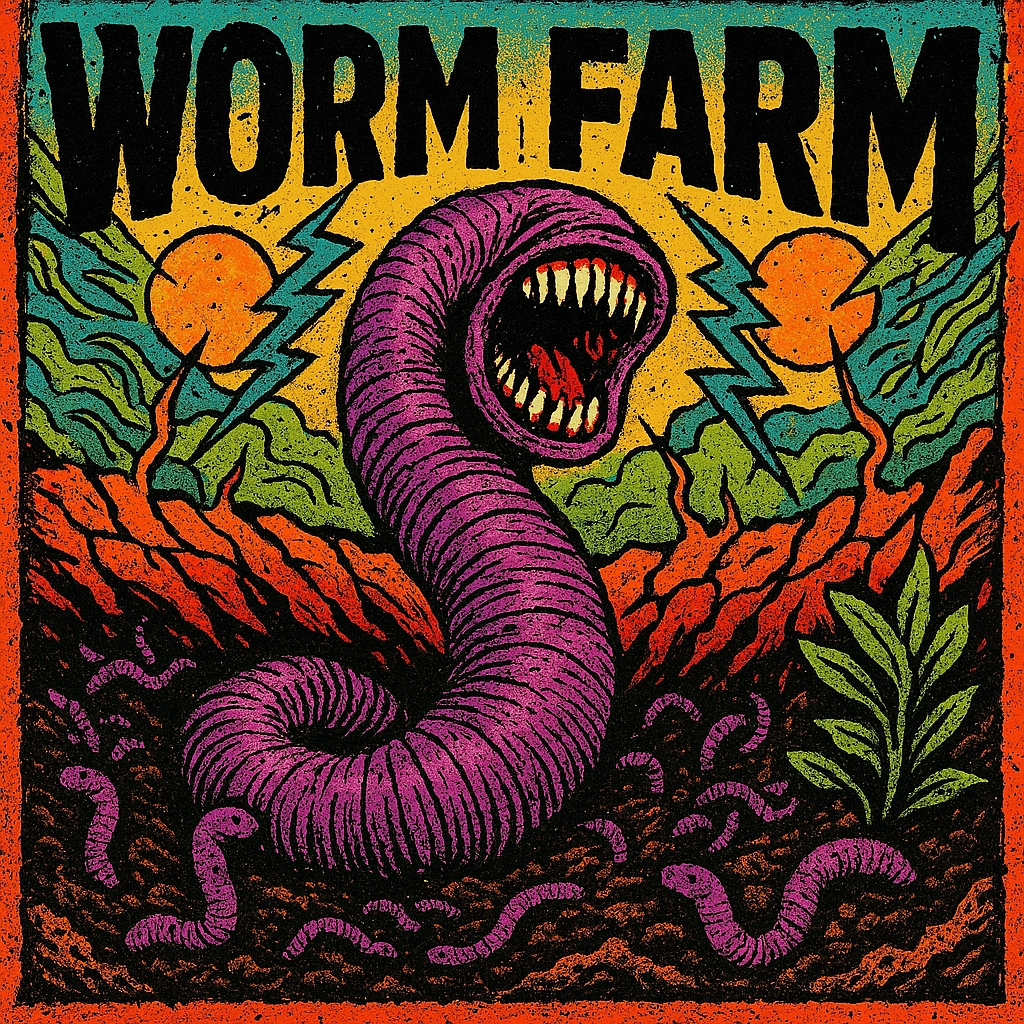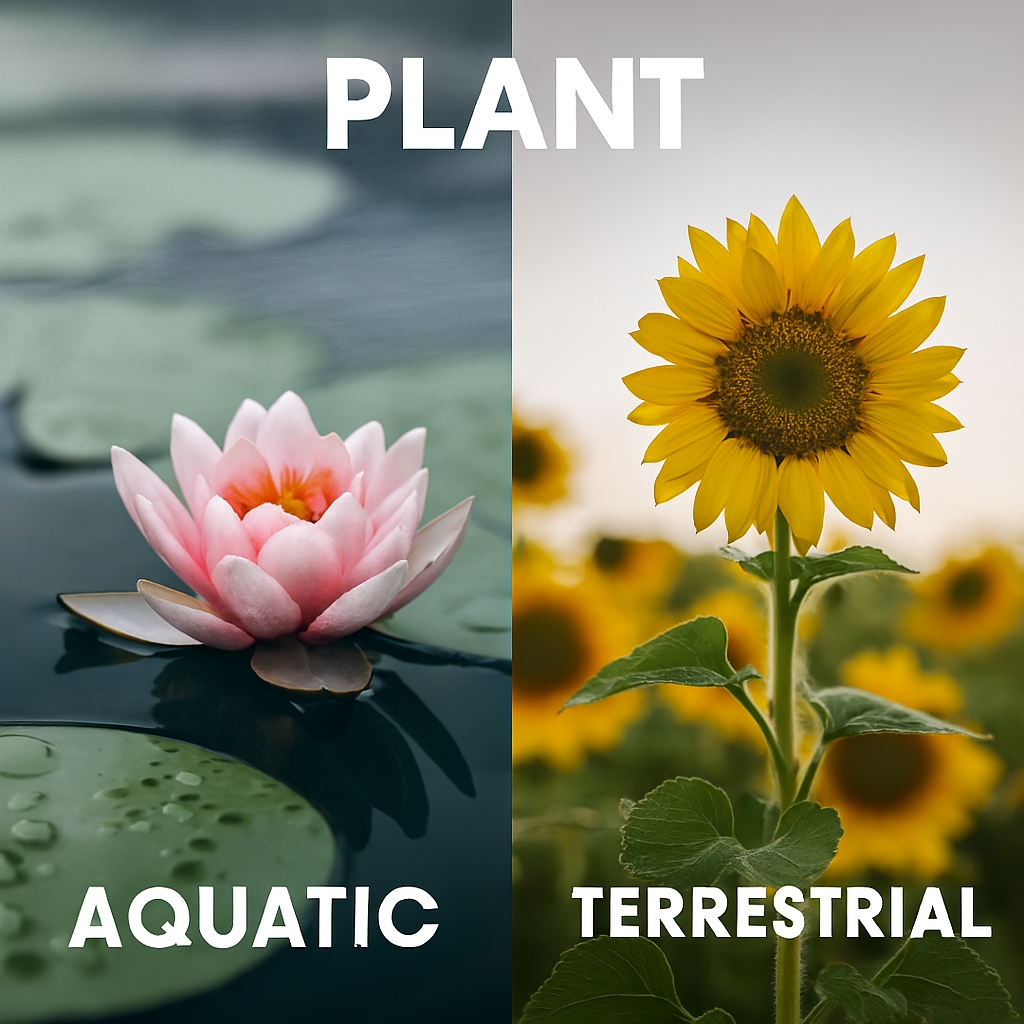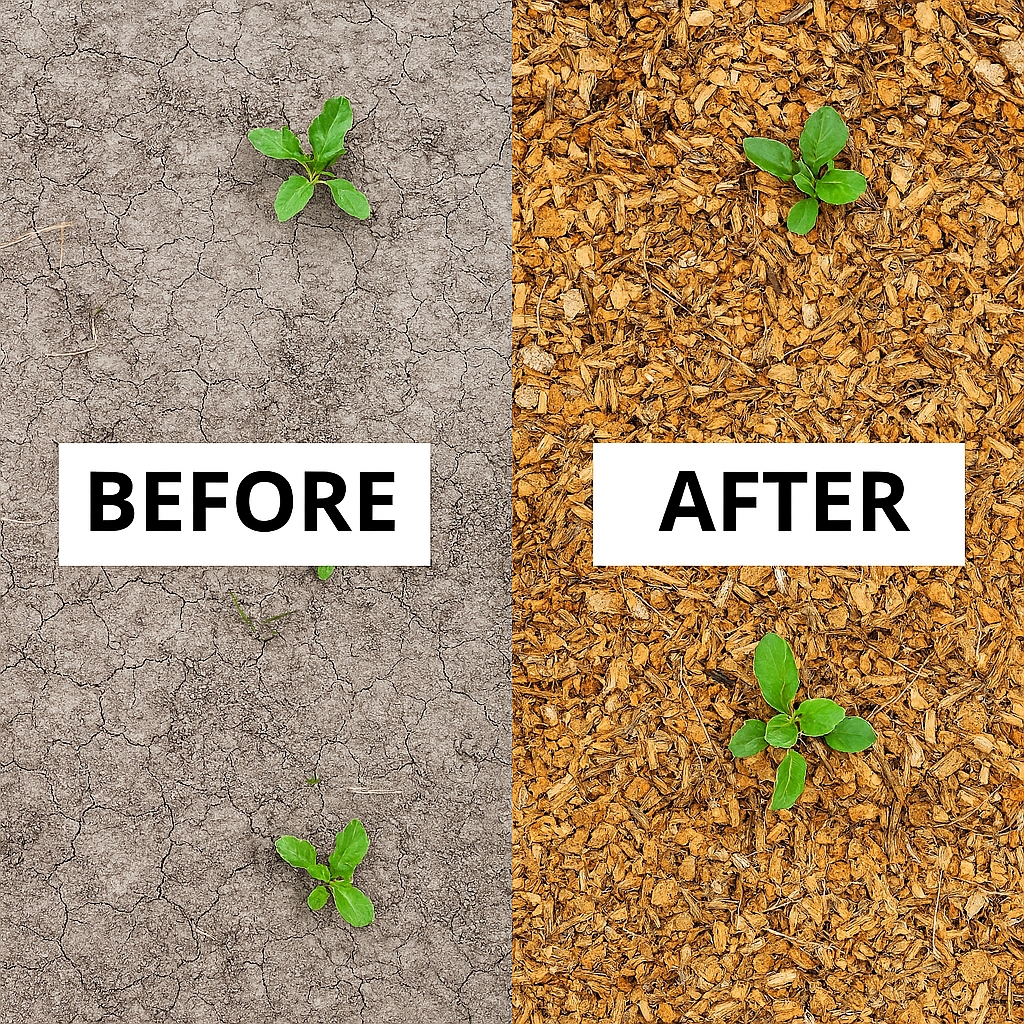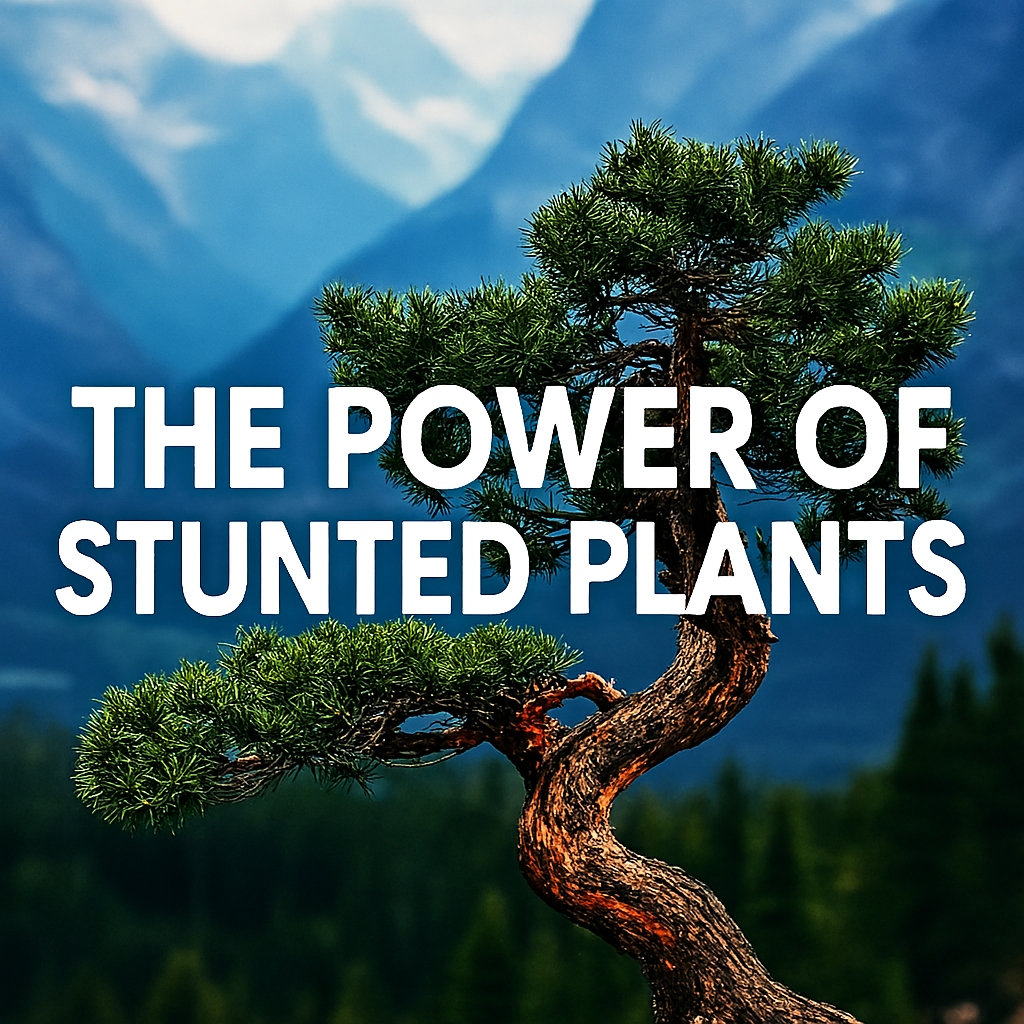How to Build a Worm Farm That Works — From Soil to Sustainability
Why Vermiculture Transforms Waste into Ecological Wealth
Worm farming is a regenerative practice that transforms kitchen scraps and garden waste into nutrient-rich compost. It is a closed-loop system that supports soil health, reduces landfill contributions, and enhances biodiversity. Unlike traditional composting, vermiculture relies on specific worm species to break down organic matter efficiently. The result is worm castings – an odorless, biologically active fertilizer that improves plant growth and soil structure.
Choosing the Right Worm Species
Not all worms are suitable for composting. The most effective species for worm farms are Eisenia fetida and Eisenia andrei – commonly known as red wigglers and tiger worms. These worms thrive in decomposing organic matter and tolerate the confined, moist conditions of worm bins. Unlike earthworms that burrow deep into soil, composting worms live near the surface and consume large volumes of organic waste. Their digestive systems break down food scraps into castings – a biologically rich material that enhances soil fertility. Red wigglers reproduce quickly under optimal conditions, making them ideal for scaling up worm farms.
They are also resilient to temperature fluctuations and can survive in a wide range of climates. Choosing the right species ensures efficient composting and a stable worm population. It is important to source worms from reputable suppliers who specialize in vermiculture. Avoid collecting worms from garden soil, as they may not adapt well to bin environments. A healthy worm colony begins with the right genetic stock and environmental match. Starting with 500 to 1,000 worms is sufficient for most home-scale systems. Over time, the population will self-regulate based on available food and space. Monitoring worm behavior and reproduction rates helps maintain balance in the ecosystem. Selecting the correct species is the foundation of a successful worm farm.

Building the Worm Bin
A worm bin is the physical structure that houses your worm colony. It must provide adequate ventilation, moisture control, and protection from extreme temperatures. Most bins are made from plastic or wood and include multiple layers for food, bedding, and castings. The bottom layer should allow for drainage to prevent waterlogging, which can suffocate worms. A lid is essential to keep pests out and maintain humidity. Drill small holes along the sides and top to ensure airflow.
The bin should be placed in a shaded, sheltered area to avoid overheating. Indoor bins can be kept in laundry rooms, garages, or under kitchen sinks. Size depends on the volume of waste you plan to process. A standard 50-liter bin suits most households. Modular stacking systems allow for easy harvesting and expansion. Avoid using metal containers, as they can rust and alter pH levels. The bin must be opaque to protect worms from light exposure. Proper bin design supports worm health and simplifies maintenance. A well-constructed bin is the backbone of a successful worm farm.
Preparing the Bedding
Bedding is the foundational layer that mimics the worms’ natural habitat. It must be moist, fibrous, and neutral in pH. Common bedding materials include shredded newspaper, cardboard, coconut coir, and aged compost. Avoid glossy paper or chemically treated wood shavings. The bedding should be fluffed to allow air pockets and prevent compaction. Moisture content should resemble a wrung-out sponge. Overly wet bedding can lead to anaerobic conditions and foul odors.
Dry bedding can dehydrate worms and slow decomposition. Mix bedding materials to balance texture and absorbency. Add a handful of garden soil to introduce beneficial microbes. Bedding should be refreshed every few weeks to maintain cleanliness. As worms consume bedding, it gradually transforms into castings. Monitor bedding depth and consistency regularly. Proper bedding supports digestion, reproduction, and movement. It also buffers acidity from food waste. A healthy bedding layer is essential for worm vitality and compost quality.
Feeding the Worms
Worms consume a wide range of organic waste, but not all scraps are suitable. Ideal foods include fruit peels, vegetable trimmings, coffee grounds, tea leaves, and crushed eggshells. Avoid meat, dairy, oily foods, and citrus, which can attract pests or disrupt pH balance. Chop food into small pieces to accelerate decomposition. Feed worms in thin layers to prevent anaerobic buildup. Bury food under bedding to reduce odor and fly exposure. Monitor consumption rates to avoid overfeeding. A healthy worm colony can eat half its body weight in food per day.
Uneaten food should not accumulate beyond a few days. Rotate feeding zones to distribute activity evenly. Keep a feeding log to track inputs and outputs. Adjust feeding frequency based on temperature and worm population. Seasonal changes may affect appetite and processing speed. Balanced feeding ensures efficient composting and worm health. Responsible feeding practices prevent bin imbalances and maintain ecosystem stability.
Managing Moisture Levels
Moisture is critical to worm survival and composting efficiency. Worms breathe through their skin, which must remain moist to function. Ideal moisture levels range between 60 and 80 percent. Use a moisture meter or squeeze test to assess conditions. Add water if bedding feels dry, but avoid pooling. Excess moisture can be absorbed with shredded paper or coir. Drainage holes must remain clear to prevent flooding. Monitor humidity during rainy seasons or indoor heating cycles.
Cover bins with breathable fabric to regulate evaporation. Mist bedding lightly during hot weather. Avoid soaking food scraps before feeding. Moisture also affects microbial activity and decomposition rates. Dry bins slow down composting and reduce worm mobility. Wet bins can lead to anaerobic decay and worm stress. Consistent moisture management supports a thriving worm colony. It also improves the texture and quality of finished castings. Moisture control is a daily responsibility in worm farming.

Regulating Temperature
Worms are sensitive to temperature fluctuations. Optimal conditions range between 15 and 25 degrees Celsius. Extreme heat can kill worms or accelerate decomposition beyond control. Cold temperatures slow metabolism and reproduction. Insulate bins during winter with straw, blankets, or foam panels. In summer, shade bins and increase ventilation.
Avoid placing bins near heat sources or direct sunlight. Monitor temperature with a soil thermometer. Relocate bins indoors during heatwaves or frosts. Use frozen water bottles to cool bins passively. Avoid sudden temperature changes that shock the colony. Maintain stable conditions to support digestion and breeding. Temperature also affects microbial populations and compost speed. Balanced thermal environments produce consistent castings. Worms will migrate within the bin to find comfort zones. Observing worm behavior helps identify temperature stress. Proactive regulation ensures year-round productivity. Temperature control is essential for sustainable vermiculture.
Monitoring pH Balance
Worms thrive in a neutral pH environment between 6.5 and 7.5. Acidic conditions can irritate their skin and disrupt digestion. Alkaline conditions may reduce microbial diversity. Use pH test strips or meters to monitor levels weekly. Add crushed eggshells or calcium carbonate to buffer acidity. Avoid citrus, onions, and fermented foods that lower pH. Mix bedding thoroughly to distribute amendments. Composting naturally produces acids, so regular checks are vital.
Sudden pH shifts may indicate overfeeding or poor aeration. Balanced pH supports microbial health and nutrient cycling. Worms will avoid acidic zones and cluster in neutral areas. Castings from balanced bins have stable pH and high fertility. Maintaining pH is part of overall bin hygiene. It also prevents pest outbreaks and odor issues. pH management is a subtle but powerful tool in worm farming.
Preventing Pests and Odors
A well-managed worm bin should not attract pests or produce foul smells. Common invaders include fruit flies, ants, and rodents. Odors often result from anaerobic conditions or rotting food. Prevent issues by burying food and maintaining airflow. Use tight-fitting lids and fine mesh screens. Avoid overfeeding and remove uneaten scraps promptly.
Clean bin edges and feeding zones regularly. Introduce nematodes or beneficial mites to control infestations. Sprinkle diatomaceous earth around the bin perimeter. Keep the area dry and free of spilled food. Odorless bins indicate healthy microbial activity. Sour or rotten smells signal imbalance. Adjust bedding and feeding to restore harmony. Pest prevention is easier than eradication. Vigilance and cleanliness protect your worm colony. A fresh-smelling bin is a sign of ecological balance.
Harvesting Worm Castings
Worm castings are the end product of vermiculture. They are dark, crumbly, and rich in nutrients. Harvesting involves separating worms from finished compost. Use light exposure to drive worms downward. Scoop castings from the top layer and sift through mesh. Alternatively, use a tiered bin system with migration trays. Castings can be stored in breathable bags or containers. Apply castings directly to soil or mix into potting blends. They improve water retention, aeration, and microbial life. Castings contain nitrogen, phosphorus, potassium, and trace minerals.
They also suppress plant diseases and stimulate root growth. Avoid overharvesting to preserve worm populations. Leave some castings in the bin to maintain microbial balance. Harvest every two to three months depending on bin size. Castings are the reward for consistent care and patience. They represent the ecological value of your worm farm.
Using Castings in the Garden
Worm castings are one of the most versatile yet potent natural fertilizers available. They contain balanced levels of nitrogen, phosphorus, and potassium, along with beneficial microbes that support plant health. Castings improve soil structure by increasing porosity and water retention. They also stimulate root development and enhance nutrient uptake. Apply castings directly to planting holes or mix into topsoil. Use as a side dressing for vegetables, herbs, and flowers.
Castings can be brewed into compost tea for foliar feeding. Unlike synthetic fertilizers, castings do not burn plants or disrupt microbial balance. They suppress soil-borne pathogens and reduce pest pressure. Castings also buffer pH and improve resilience to drought. Regular use builds long-term soil fertility. They are especially effective in raised beds and container gardens. Castings support organic growing practices and reduce reliance on chemical inputs. Their versatility makes them a cornerstone of regenerative gardening.
Compost Tea from Worm Castings
Compost tea is a liquid extract made by steeping worm castings in aerated water. It delivers nutrients and microbes directly to plant roots and foliage. To make compost tea, mix one part castings with five parts dechlorinated water. Aerate the mixture for 24 to 48 hours using an aquarium pump. Strain the liquid and apply immediately to soil or leaves. Use within six hours to preserve microbial activity.
Compost tea enhances disease resistance and nutrient absorption. It can be used weekly during active growth periods. Avoid applying during peak sun to prevent leaf burn. Store castings in breathable containers to maintain microbial viability. Compost tea is ideal for seedlings, transplants, and stressed plants. It complements solid castings and boosts overall garden health. This method amplifies the benefits of vermiculture and supports sustainable cultivation.

Scaling Up Your Worm Farm
As your garden grows, your worm farm can expand to meet demand. Larger systems require more space, food, and oversight. Use modular bins or flow-through reactors for efficient scaling. Increase worm populations gradually to avoid overcrowding. Monitor feeding rates and adjust inputs accordingly. Larger farms may benefit from automated aeration and moisture control.
Commercial setups often use windrows or continuous flow bins. Scaling up allows for castings production, compost tea brewing, and even worm sales. Maintain hygiene and consistency across all units. Document inputs, outputs, and environmental conditions. Expansion should align with garden needs and available resources. A scaled worm farm can support community gardens, schools, or small farms. It also enhances waste diversion and ecological impact. Growth should be strategic and sustainable. Scaling up transforms worm farming from hobby to ecosystem service.
Integrating with Other Compost Systems
Worm farming complements other composting methods. Use worm bins to process kitchen scraps while hot compost piles handle yard waste. Combine castings with leaf mold or bokashi for diverse soil amendments. Worms can be introduced into mature compost piles to finish decomposition. Vermiculture adds microbial diversity and accelerates breakdown. Integrate bins with rainwater harvesting and permaculture zones. Use castings to inoculate new compost batches. Maintain separate systems for meat and dairy waste. Cross-system integration maximizes resource use and soil health. It also reduces labor and improves compost quality. Worm farming fits into broader regenerative frameworks. It strengthens ecological loops and supports closed-system gardening. Integration is key to resilient soil management.
Seasonal Adjustments
Worm farming requires seasonal adaptations. In summer, increase ventilation and reduce feeding to prevent overheating. Use frozen water bottles or shade cloths to cool bins. In winter, insulate bins and reduce moisture inputs. Move bins indoors or into greenhouses if needed. Adjust feeding based on worm activity and temperature. Monitor moisture and pH more frequently during seasonal shifts. Use bedding with higher absorbency during rainy periods. Avoid feeding frozen or moldy food in cold months. Seasonal changes affect microbial activity and decomposition rates. Plan harvests around peak worm productivity. Maintain consistent bin conditions despite external fluctuations. Seasonal awareness ensures year-round success. Adaptation is part of ecological stewardship.
Troubleshooting Common Issues
Worm farming is low-maintenance but not problem-free. Common issues include foul odors, pests, slow decomposition, and worm die-off. Odors often result from overfeeding or poor aeration. Remove excess food and fluff bedding to restore balance. Fruit flies can be controlled with vinegar traps and burial techniques. Slow decomposition may indicate low temperatures or poor moisture. Adjust environmental conditions and monitor feeding. Worm die-off can result from extreme pH or temperature. Test conditions and make gradual corrections. Keep a log of inputs and observations. Troubleshooting is part of responsible vermiculture. Early intervention prevents long-term damage. Learn from patterns and refine your system. Every issue is a chance to improve.
Environmental Impact
Worm farming reduces landfill waste and greenhouse gas emissions. Organic waste in landfills produces methane, a potent greenhouse gas. Vermiculture diverts food scraps into productive soil amendments. It supports carbon sequestration and biodiversity. Castings improve soil health and reduce chemical fertilizer use. Worm farms promote circular economies and ecological literacy. They can be scaled to support schools, restaurants, and municipalities. Vermiculture aligns with climate action and sustainability goals. It transforms waste into value and restores soil function. The environmental benefits extend beyond the garden. Worm farming is a quiet revolution in waste management.
Educational and Community Value
Worm farms are powerful educational tools. They teach biology, ecology, and sustainability in hands-on ways. Schools use worm bins to engage students in science and stewardship. Community gardens benefit from shared castings and compost tea. Workshops and demonstrations build ecological awareness. Worm farming fosters collaboration and resource sharing. It connects people to soil and cycles of life. Public installations can reduce neighborhood waste and improve green spaces. Educational value enhances adoption and impact. Vermiculture is more than composting—it’s a gateway to ecological literacy.
Economic Potential
Worm farming has economic applications. Castings can be sold to gardeners, nurseries, and landscapers. Worms themselves are marketable for bait, composting, and pet food. Compost tea is a high-value product for organic growers. Scaled farms can generate income while reducing waste. Startup costs are low and returns grow with consistency. Local markets value sustainable inputs and traceable production. Economic potential depends on quality, branding, and outreach. Vermiculture supports green entrepreneurship and circular business models. It turns waste into wealth and soil into strategy.
Comparing Worm Castings to Other Fertilizers
Here’s a table comparing worm castings to other common soil amendments
| Fertilizer Type | Nutrient Profile | Microbial Activity | Risk of Burn | Environmental Impact |
|---|---|---|---|---|
| Worm Castings | Balanced NPK + micronutrients | High | None | Positive |
| Synthetic Fertilizer | High NPK, no microbes | None | High | Negative |
| Compost | Variable, depends on input | Moderate | Low | Positive |
Ideal Worm Bin Conditions
This table summarizes optimal conditions for worm health and productivity
| Factor | Ideal Range | Notes |
|---|---|---|
| Temperature | 15–25°C | Avoid extremes to prevent die-off |
| Moisture | 60–80% | Use squeeze test or moisture meter |
| pH | 6.5–7.5 | Add eggshells to buffer acidity |
| Feeding Rate | 50% of worm weight/day | Adjust based on activity and season |
Suitable and Unsuitable Foods
Here’s a quick reference for what to feed and avoid
| Suitable Foods | Unsuitable Foods |
|---|---|
| Fruit and vegetable scraps | Meat and dairy |
| Coffee grounds and tea bags | Citrus and onions |
| Crushed eggshells | Oily or spicy foods |
| Shredded paper and cardboard | Processed or salty items |
Using Castings in the Garden
Worm castings are one of the most potent natural fertilizers available. They contain a balanced mix of macro and micronutrients that support plant growth without burning roots. Castings improve soil structure by increasing porosity and water retention. They also stimulate microbial activity, which enhances nutrient cycling.
Apply castings directly to planting holes, mix into potting soil, or use as a top dressing. For seedlings, castings provide gentle nutrition during early development. In established beds, they boost flowering and fruiting. Castings can also be brewed into compost tea for foliar feeding. Unlike synthetic fertilizers, castings do not leach into waterways or disrupt soil ecology. Their slow-release nature ensures long-term benefits. Regular application builds soil resilience and reduces the need for chemical inputs. Castings are especially valuable in sandy or depleted soils. They help retain moisture and buffer pH fluctuations. Using castings consistently transforms garden health from the ground up.
Making Worm Tea
Worm tea is a liquid extract made by steeping castings in aerated water. It delivers nutrients and beneficial microbes directly to plant roots and leaves. To make worm tea, combine one part castings with ten parts dechlorinated water. Use an aquarium pump to aerate the mixture for 24 hours. Strain the liquid and apply immediately to avoid microbial die-off.
Worm tea enhances disease resistance and promotes vigorous growth. It can be sprayed on foliage or poured into the soil. Unlike chemical foliar sprays, worm tea is non-toxic and environmentally safe. It improves nutrient uptake and root development. Regular use reduces pest pressure and fungal infections. Worm tea is especially useful during transplanting or stress periods. It complements solid castings and extends their benefits. Store worm tea in breathable containers for short periods only. Freshness is key to microbial potency. Making worm tea adds versatility to your worm farm outputs.

Scaling Up Your Worm Farm
As your worm population grows, you may need to expand your system. Scaling up involves adding bins, increasing feeding volume, and managing castings output. Modular stacking bins allow vertical expansion without increasing footprint. Larger farms may use flow-through systems or windrows. Monitor worm density to avoid overcrowding. A healthy bin supports 1,000 to 2,000 worms per square meter. Increase bedding and ventilation as you scale.
Feed more frequently but avoid overloading. Harvest castings regularly to maintain space. Scaling up also means managing moisture and temperature across multiple units. Label bins to track feeding and harvesting schedules. Consider community composting partnerships to source food waste. Larger farms can support school gardens, community plots, or small-scale agriculture. Scaling up transforms worm farming from a household practice into a community asset.
Table – Common Worm Farm Inputs and Their Effects
| Input Type | Effect on Worms | Composting Speed | pH Impact | Notes |
|---|---|---|---|---|
| Fruit scraps | High energy, fast decay | Fast | Slightly acidic | Avoid citrus and pits |
| Vegetable peels | Balanced nutrition | Moderate | Neutral | Chop for faster breakdown |
| Coffee grounds | Stimulates activity | Fast | Acidic | Mix with bedding |
| Eggshells | Calcium source | Slow | Alkaline | Crush finely |
| Cardboard/newspaper | Bedding and carbon | Slow | Neutral | Avoid glossy or colored inks |
Seasonal Adjustments
Worm farms require seasonal care to maintain productivity. In summer, increase shading and mist bins to prevent overheating. In winter, insulate bins and reduce feeding to match slower metabolism. Spring is ideal for expansion and harvesting. Autumn may require moisture adjustments due to rainfall. Monitor worm behavior for signs of stress. Seasonal shifts affect microbial activity and decomposition rates. Adjust feeding schedules and bedding volume accordingly. Use thermal blankets or straw to buffer temperature extremes. Relocate bins indoors during harsh weather. Seasonal care ensures year-round composting and worm health. It also prevents population crashes and bin imbalances. Adapting to seasonal rhythms is part of ecological stewardship.
Table – Seasonal Care Checklist
| Season | Temperature Range | Key Actions | Common Issues | Solutions |
|---|---|---|---|---|
| Summer | 25–35°C | Shade bins, mist bedding | Overheating, dryness | Frozen bottles, extra bedding |
| Autumn | 15–25°C | Adjust moisture, harvest castings | Rain saturation | Drainage checks |
| Winter | 5–15°C | Insulate, reduce feeding | Slow activity | Thermal wrap, indoor bins |
| Spring | 15–25°C | Expand bins, increase feeding | Rapid growth | Add layers, monitor density |
Integrating with Compost Systems
Worm farms complement traditional composting. Use worm castings to inoculate compost piles with beneficial microbes. Add partially decomposed compost to worm bins for faster breakdown. Worms accelerate composting by fragmenting organic matter. They also stabilize nitrogen and reduce odor. Integrating systems maximizes waste recovery and soil fertility. Use compost for bulk material and worm bins for precision outputs. Compost piles handle woody or fibrous waste that worms cannot digest. Worm farms process soft, nitrogen-rich inputs. Together, they create a balanced nutrient cycle. Integration supports larger gardens and diversified crops. It also reduces reliance on external inputs. Combining systems is a strategic move for ecological resilience.
Table – Compost vs Worm Farm Comparison
| Feature | Compost Pile | Worm Farm |
|---|---|---|
| Processing Speed | Moderate | Fast |
| Input Flexibility | Broad (includes wood) | Limited (soft waste) |
| Odor Control | Variable | Excellent |
| Nutrient Output | Bulk compost | Concentrated castings |
| Space Requirement | Large outdoor area | Compact indoor/outdoor |
Community and Educational Impact
Worm farming is a powerful educational tool. It teaches biology, ecology, and sustainability through hands-on practice. Schools use worm farms to engage students in environmental science. Community gardens benefit from shared worm systems. Workshops and demonstrations spread awareness and skills. Worm farms promote circular thinking and waste literacy. They also foster stewardship and ecological empathy. Public installations can divert food waste from landfills. Educational programs build local resilience and food security. Worm farming connects people to soil and cycles. It transforms waste into learning and empowerment. Community impact extends beyond compost—it cultivates ecological citizenship.
Troubleshooting Common Issues
Worm farms occasionally face problems that require intervention. Overfeeding leads to odor and pest outbreaks. Underfeeding slows composting and reproduction. Excess moisture causes anaerobic decay. Dry bins dehydrate worms and halt digestion. Temperature extremes stress or kill worms. pH imbalance affects microbial health. Pests like fruit flies or ants disrupt bin harmony. Solutions include adjusting feeding, adding bedding, and improving ventilation. Regular monitoring prevents most issues. Use logs to track inputs and conditions. Respond quickly to changes in worm behavior. Troubleshooting is part of responsible vermiculture. It ensures long-term success and ecological integrity.
Vermiculture and Soil Microbiology
Worm farming enhances soil microbiology by introducing beneficial bacteria, fungi, and protozoa. As worms digest organic matter, they excrete castings rich in microbial life. These microbes play a vital role in nutrient cycling, breaking down complex compounds into plant-available forms. Worm castings also contain enzymes that stimulate root growth and disease resistance. The microbial diversity in castings supports soil resilience and suppresses pathogens. Unlike sterile chemical fertilizers, vermicompost builds living soil structure. It encourages symbiotic relationships between roots and microbes. Healthy soil microbiology improves water retention, aeration, and nutrient uptake. Vermiculture is not just about worms—it’s about cultivating a thriving underground ecosystem.
Reducing Landfill Waste
Worm farming diverts significant amounts of organic waste from landfills. Food scraps, paper, and garden trimmings become valuable inputs rather than methane-producing refuse. Landfills are major sources of greenhouse gases, especially methane from decomposing organic matter. By composting at home, worm farmers reduce municipal waste loads and carbon emissions. A single household worm bin can process up to five kilograms of waste per week. Scaling this across communities creates measurable environmental impact. Vermiculture supports zero-waste goals and circular resource flows. It transforms waste into soil rather than pollution. Reducing landfill dependency is a core ecological benefit of worm farming.
Supporting Pollinators and Biodiversity
Healthy soil supports diverse plant life, which in turn attracts pollinators and beneficial insects. Worm castings improve flowering and fruiting, increasing nectar and pollen availability. Gardens enriched with vermicompost host more bees, butterflies, and predatory insects. These species contribute to pollination, pest control, and ecological balance. Biodiversity begins underground with microbial and invertebrate life. Worm farming strengthens the base of the food web. It also reduces the need for chemical pesticides that harm non-target species. Supporting biodiversity is not an abstract goal—it’s a direct outcome of soil stewardship. Vermiculture is a gateway to ecological abundance.
Legal and Safety Considerations
Worm farming is generally safe and legal in residential settings. However, large-scale operations may require permits or compliance with waste management regulations. Always check local guidelines before selling castings or expanding beyond household use. Safety involves proper bin construction, pest control, and hygiene. Avoid handling castings with bare hands if immunocompromised. Use gloves and wash hands after maintenance. Store castings away from food preparation areas. Ensure bins are child- and pet-safe. Legal compliance and safety protocols protect your household and community. Responsible vermiculture includes awareness of public health and environmental standards.
Economic Value of Worm Castings
Worm castings have high market value due to their concentrated nutrients and microbial richness. Gardeners, farmers, and nurseries pay premium prices for quality vermicompost. A well-managed worm farm can produce several kilograms of castings monthly. Selling castings locally supports sustainable agriculture and community resilience. Castings outperform synthetic fertilizers in long-term soil health. Their economic value reflects ecological function. While this guide avoids monetization language, it’s worth noting that castings are a sought-after resource. Their value lies in their ability to restore soil, reduce inputs, and support regenerative practices. Vermiculture is an investment in ecological capital.
Integrating with Permaculture
Worm farming aligns seamlessly with permaculture principles. It embodies closed-loop systems, waste reduction, and soil regeneration. Castings support food forests, raised beds, and container gardens. Worm bins can be integrated into chicken coops, greenhouses, or aquaponic setups. Vermiculture complements composting toilets and greywater systems. It turns waste into fertility without external inputs. Permaculture design encourages stacking functions—worm farms do just that. They process waste, produce fertilizer, and educate users. Integrating vermiculture into permaculture builds resilient, self-sustaining ecosystems. It’s a practical expression of ecological ethics and design intelligence.
Urban Worm Farming
Worm farming is not limited to rural or suburban settings. Urban dwellers can maintain compact bins on balconies, rooftops, or under sinks. Modular systems fit small spaces and require minimal maintenance. Urban worm farms reduce food waste and support container gardening. They also build soil in areas with limited access to green space. Community worm hubs can serve apartment complexes or schools. Urban vermiculture reconnects people with soil and cycles. It challenges the disconnect between consumption and regeneration. Worm farming in cities is a quiet revolution in ecological literacy.
Climate Resilience and Carbon Sequestration
Healthy soil stores carbon through microbial activity and organic matter retention. Worm castings increase soil carbon by stabilizing humus and enhancing aggregation. Vermiculture reduces methane emissions by diverting food waste from landfills. It also lowers reliance on fossil-fuel-based fertilizers. Climate resilience begins with soil health. Worm farming contributes to carbon drawdown and ecosystem stability. It’s a grassroots solution to global challenges. By restoring soil, we buffer against drought, erosion, and nutrient loss. Vermiculture is a climate action strategy rooted in biology and behavior.
Long-Term Maintenance
Worm farms require consistent but simple care. Feed regularly, monitor moisture, and harvest castings every few months. Refresh bedding as needed and adjust for seasonal changes. Observe worm behavior for signs of stress or imbalance. Keep records of inputs, outputs, and conditions. Clean bins periodically to prevent buildup. Replace worn components and check for pests. Long-term maintenance ensures productivity and ecological function. It also deepens your understanding of soil systems. Worm farming is not a one-time setup—it’s an ongoing relationship with living soil.
Ecological Legacy
Worm farming leaves a legacy of restored soil, reduced waste, and ecological awareness. It teaches stewardship, patience, and systems thinking. Castings nourish plants that feed people and pollinators. Microbes seeded by worms transform landscapes and communities. Vermiculture is more than compost—it’s culture. It connects us to the unseen processes that sustain life. Every bin is a microcosm of regeneration. The legacy of worm farming is written in roots, microbes, and the quiet hum of decomposition. It’s a practice that outlives trends and transcends scale. Ecological legacy begins with a handful of worms and a commitment to care.
Conclusion
Worm farming is a regenerative act that transforms waste into ecological wealth. It supports soil health, biodiversity, and climate resilience. From bin construction to microbial impact, every step contributes to a living system. Vermiculture is accessible, scalable, and deeply rewarding. It invites us to participate in nature’s cycles rather than disrupt them. Whether you’re growing herbs on a balcony or managing a community garden, worm farming offers a path to restoration. It’s not just about compost—it’s about connection. The soil remembers every choice we make. Let worm farming be one of them.
Join the Discussion
Have you started your own worm farm? What challenges or breakthroughs have you experienced?
#WormFarming #Vermiculture #SoilHealth #RegenerativeGardening #CompostCulture #MicrobialEcology #ZeroWasteLiving #UrbanPermaculture #EcologicalDesign #ClimateResilience #GardenSoilMatters #LivingCompost #SustainableSystems #GrowYourOwnFertility #WormBinWisdom #CircularSoil #RootedRegeneration #BiodiversityStartsBelow #WasteToWealth #EcoLegacy













Leave a Reply